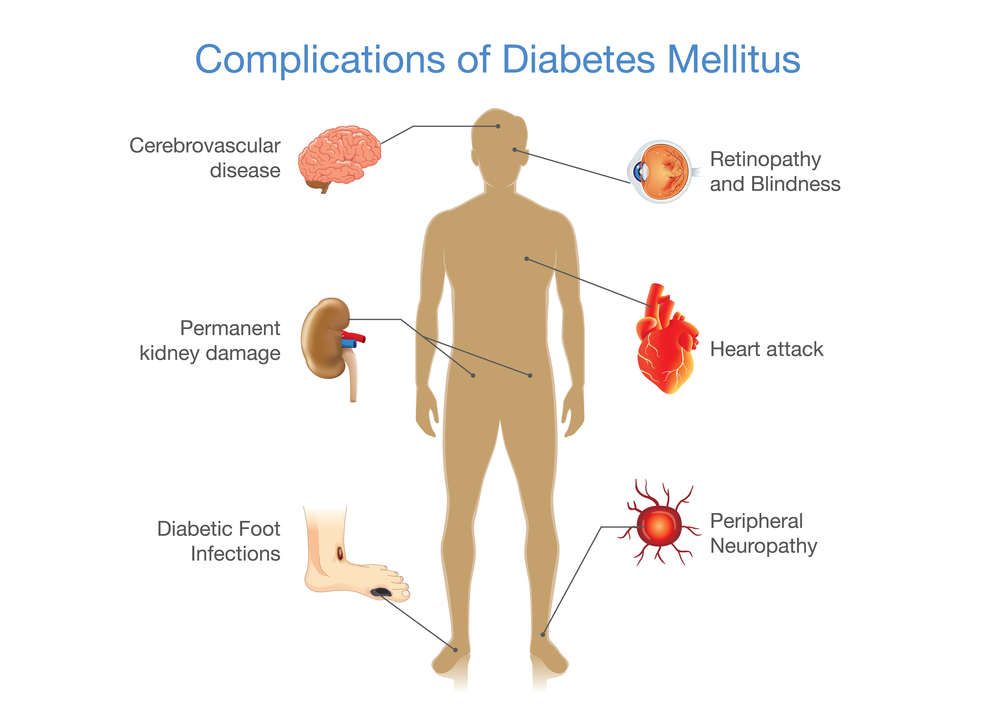Overview
Diabetes Mellitus is a disease that prevents your body from properly using the energy from the food you eat.
Diabetes occurs in one of the following situations:
- The pancreas (an organ behind your stomach) produces little insulin or no insulin at all. Insulin is a naturally occurring hormone, produced by the beta cells of the pancreas, which helps the body use sugar for energy
- The pancreas makes insulin, but the insulin made does not work as it should. This condition is called insulin resistance
Your body is made up of millions of cells. To make energy, the cells need food in a very simple form. When you eat or drink, much of your food is broken down into a simple sugar called glucose. Glucose provides the energy your body needs for daily activities.
The blood vessels and blood are the highways that transport sugar from where it is either taken in (the stomach) or manufactured (in the liver) to the cells where it is used (muscles) or where it is stored (fat). Sugar cannot go into the cells by itself. The pancreas releases insulin into the blood, which serves as the helper, or the “key,” that lets sugar into the cells for use as energy.
When sugar leaves the bloodstream and enters the cells, the blood sugar level is lowered. Without insulin, or the “key,” sugar cannot get into the body’s cells for use as energy. This causes sugar to rise. Too much sugar in the blood is called “hyperglycemia” (high blood sugar).
What are the types of Diabetes?
There are two main types of diabetes: type 1 and type 2:
Type 1 diabetes occurs because the insulin-producing cells of the pancreas (beta cells) are damaged. In type 1 diabetes, the pancreas makes little or no insulin, so sugar cannot get into the body’s cells for use as energy. People with type 1 diabetes must use insulin injections to control their blood glucose. Type 1 is the most common form of diabetes in people who are under age 30, but it can occur at any age. Ten percent of people with diabetes are diagnosed with type 1.
Type 2 diabetes (adult onset diabetes), the pancreas makes insulin, but it either doesn’t produce enough, or the insulin does not work properly. Nine out of 10 people with diabetes have type 2. This type occurs most often in people who are over 40 years old but can occur even in childhood if there are risk factors present. Type 2 diabetes may sometimes be controlled with a combination of diet, weight management and exercise. However, treatment also may include oral glucose-lowering medications (taken by mouth) or insulin injections (shots). Other types of diabetes might result from pregnancy (gestational diabetes), surgery, use of certain medicines, various illnesses and other specific causes.
Causes
- Being overweight
- Physical stress (such as surgery or illness)
- Use of certain medications, including steroids
- Injury to the pancreas (such as infection, tumor, surgery or accident)
- Autoimmune disease
- High blood pressure
- Abnormal blood cholesterol or triglyceride levels
- Age (risk increases with age)
- Smoking
- History of gestational diabetes
Symptoms
- Increased thirst
- Increased hunger (especially after eating)
- Dry mouth
- Frequent urination
- Unexplained weight loss (even though you are eating and feel hungry)
- Weak, tired feeling
- Blurred vision
- Numbness or tingling in the hands or feet
- Slow-healing sores or cuts
- Dry and itchy skin
- Frequent yeast infections or urinary tract infections


